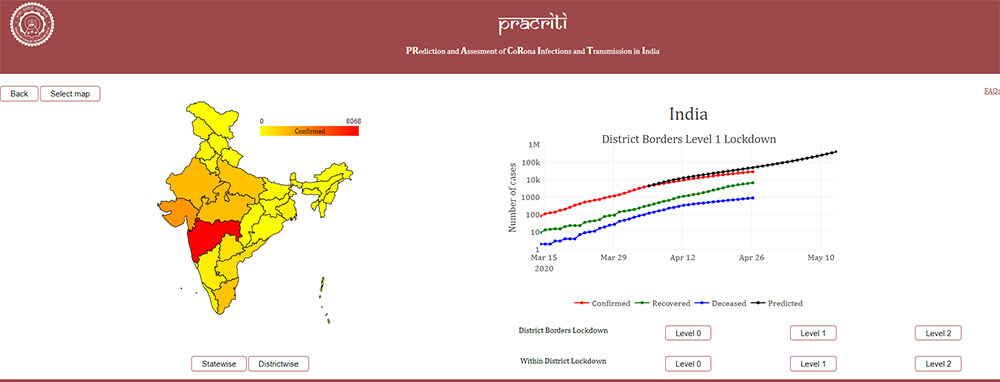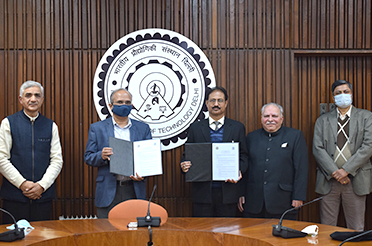Publish Date: 24th April 2020
IIT Delhi researchers develop web-based COVID-19 dashboard 'PRACRITI'- PRediction and Assessment of CoRona Infections and Transmission in India
Share this on

IIT Delhi researchers have developed a web-based dashboard for predicting the spread of COVID-19 in India. The mobile-friendly dashboard, named as PRACRITI (PRediction and Assessment of CoRona Infections and Transmission in India, see: http://pracriti.iitd.ac.in ), gives detailed state-wise and district-wise predictions of COVID-19 cases in India. The projections are given for a three-week period, which is updated on a weekly basis.
The researchers believe that such a platform will be highly useful for healthcare bodies, local and central authorities, to efficiently plan for different future scenarios and resource allocation.
A key parameter of interest on COVID-19 is the basic reproduction number R0 and its countrywide variability. R0 refers to the number of people to whom the disease spreads from a single infected person. For instance, if an active COVID-19 patient infects two uninfected persons, the R0 is two. Hence, reduction of R0 is the key in controlling and mitigating the COVID-19 in India.
PRACRITI provides the R0 values of each district and state in India based on the data available from sources such as the Ministry of Health and Family Welfare (MoHFW), Govt. of India; National Disaster Management Authority (NDMA), and World Health Organisation (WHO).
Led by Prof. N. M. Anoop Krishnan, in collaboration with Prof. Hariprasad Kodamana, a team of volunteers from IIT Delhi, namely, Mr. Hargun Singh, Mr. Ravinder, Mr. Devansh Agrawal, Dr. Amreen Jan, Mr. Suresh, and Mr. Sourabh Singh have developed this dashboard.
Prof. N.M. Anoop Krishnan, Civil Engineering Dept., IIT Delhi said, “Getting the district-wise R0 is crucial as this will enable authorities to know the exact rate of spread in India locally.”
Prof. Hariprasad Kodamana, Chemical Engineering Dept., IIT Delhi said, “Three weeks ahead district-wise prediction of infections in India provided by PRACRITI can be of immense help for policymakers for planning strategic interventions for controlling COVID-19 spread in India.”
The model also accounts for the effect of different lockdown scenarios, such as the effect of locking down the district boundaries, and implementing different levels of lockdown within a district. These predictions can help the districts and states having higher R0 to take rigorous measures to control the spread of COVID-19, while for those with low R0 they need to sustain measures and remain very vigilant.








